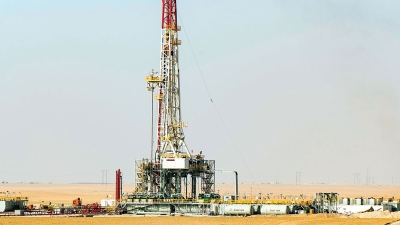
Geographic Survey Project for Renewable Energy Projects

The Geographic Survey for Renewable Energy Projects is a national project to measure renewable energy resources and their sites across the Kingdom of Saudi Arabia. The Ministry of Energy launched it on June 24, 2024. The project comes as a part of the National Renewable Energy Program (NREP), and it is the first of its kind globally in terms of geographic coverage, spanning an area of 850,000 km².
The geographic survey scope of the renewable energy projects
The geographic survey for renewable energy projects covers an area of approximately 850,000 km² across all of the Kingdom's regions. It does not include inhabited areas, dunes, and airspace restrictions. The project contributes to identifying optimal sites for renewable energy projects development in the Kingdom's regions, based on the volume of renewable energy resources and the prioritization of project development.
The up-to-date and accurate data provided by the survey contributes to the immediate allocation of sites for renewable energy projects, accelerating the tendering and implementation process in coordination with relevant entities. Furthermore, data provision helps to mitigate project implementation risks, enhance investment attraction, and encourage investors to participate in renewable energy project development and investment.
Phases of the geographic survey for renewable energy projects
In the first phase of the geographic survey for renewable energy projects, implementation contracts were awarded to national companies to install 1,200 measurement stations for monitoring solar and wind energy across various provinces of the Kingdom to analyze and track data issued by the ministry's data platform. This platform was developed as part of the project to monitor, record, transfer, and digitally analyze and process data using artificial intelligence (AI) technologies.
In the second phase, data is collected to be analyzed and evaluated to pinpoint optimal sites for the establishment of renewable energy projects. Once these sites are confirmed for feasibility, the stations are relocated and installed at these sites, ensuring the continuous and precise provision of necessary data.
Geographic survey stations for renewable energy projects
The solar energy monitoring stations cover an area of approximately 625 m² and are equipped with around twenty advanced sensors mounted on the ground. These devices are responsible for identifying and recording direct normal irradiance, global horizontal irradiance, diffuse horizontal irradiance, dust and pollutant deposition rates, earth albedo, ambient temperature, rainfall rates, relative humidity, and atmospheric pressure.
On the other hand, the wind energy monitoring stations, which are installed at heights of up to 120 m, include approximately twenty sensors designed to measure wind speed and direction, ambient temperature, atmospheric pressure, and relative humidity. The measurement process begins by monitoring approximately forty real-time sensors per station, issuing regular reports on them, and comparing earth data with satellite data to ensure data quality as per global standards and best practices.
Related quizzes

